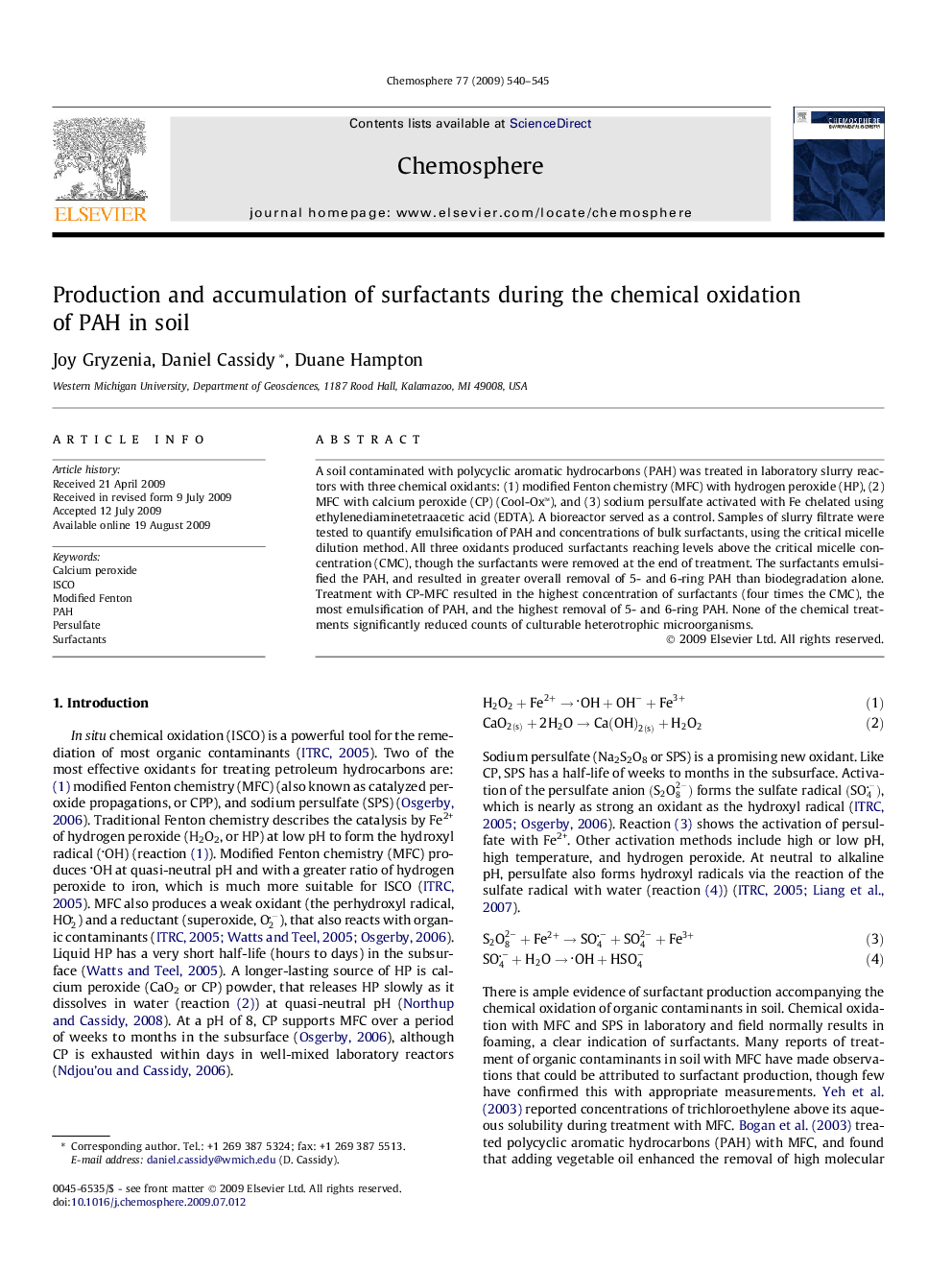| Article ID | Journal | Published Year | Pages | File Type |
|---|---|---|---|---|
| 4412733 | Chemosphere | 2009 | 6 Pages |
A soil contaminated with polycyclic aromatic hydrocarbons (PAH) was treated in laboratory slurry reactors with three chemical oxidants: (1) modified Fenton chemistry (MFC) with hydrogen peroxide (HP), (2) MFC with calcium peroxide (CP) (Cool-Ox™), and (3) sodium persulfate activated with Fe chelated using ethylenediaminetetraacetic acid (EDTA). A bioreactor served as a control. Samples of slurry filtrate were tested to quantify emulsification of PAH and concentrations of bulk surfactants, using the critical micelle dilution method. All three oxidants produced surfactants reaching levels above the critical micelle concentration (CMC), though the surfactants were removed at the end of treatment. The surfactants emulsified the PAH, and resulted in greater overall removal of 5- and 6-ring PAH than biodegradation alone. Treatment with CP-MFC resulted in the highest concentration of surfactants (four times the CMC), the most emulsification of PAH, and the highest removal of 5- and 6-ring PAH. None of the chemical treatments significantly reduced counts of culturable heterotrophic microorganisms.
